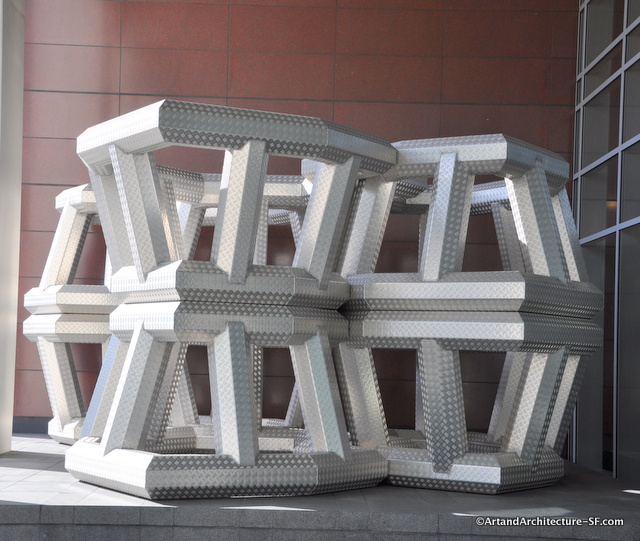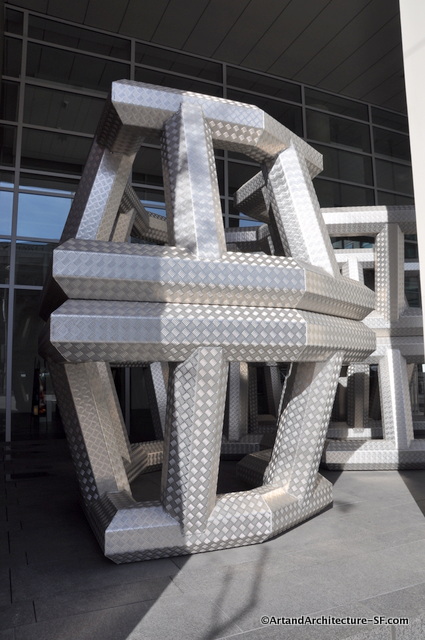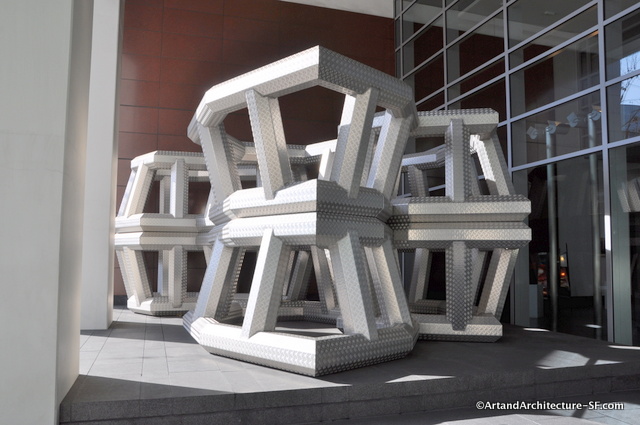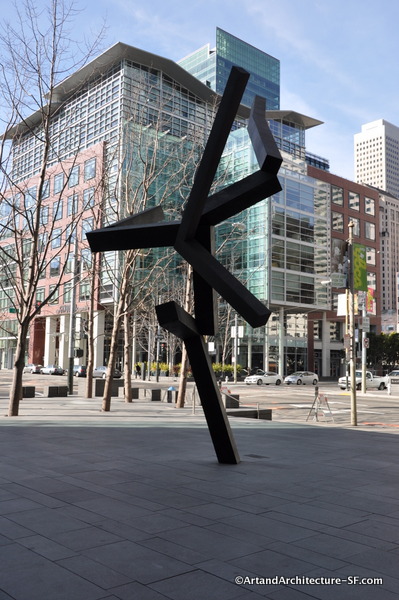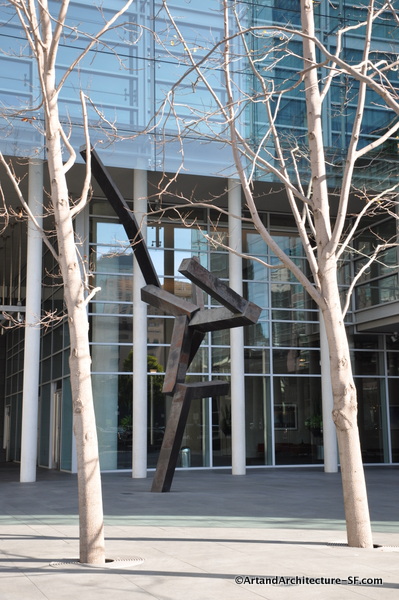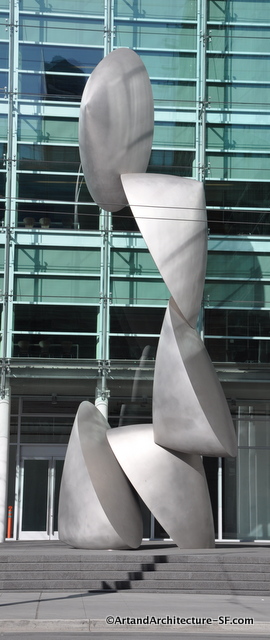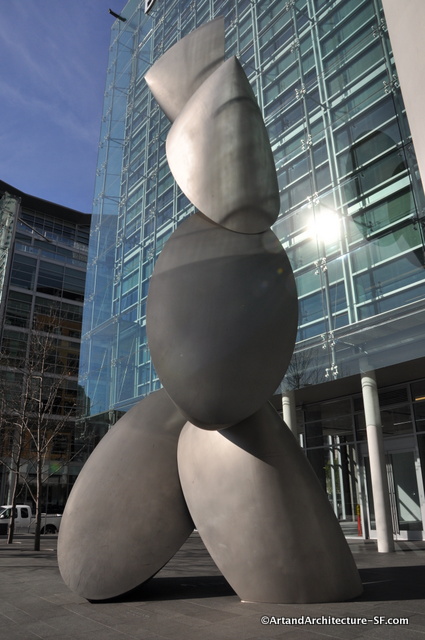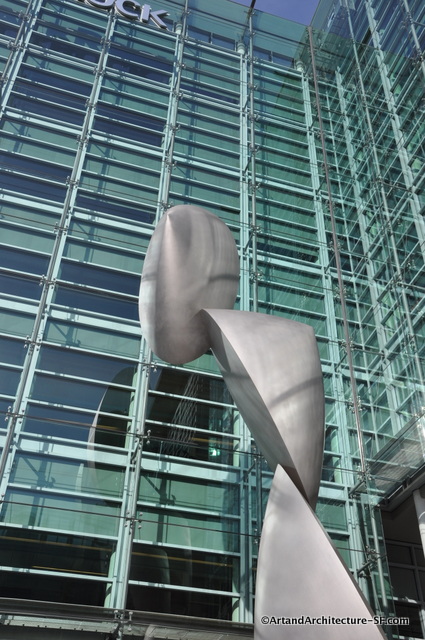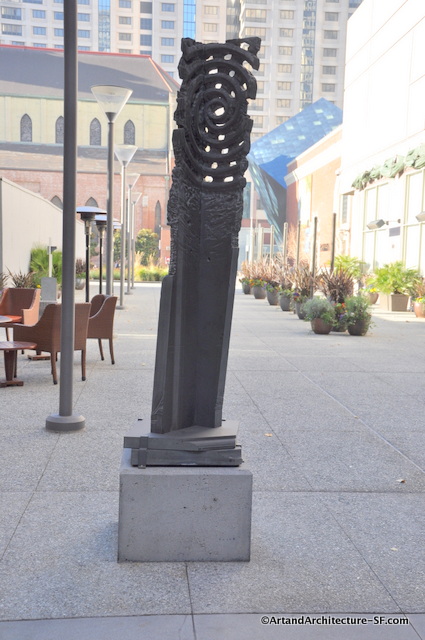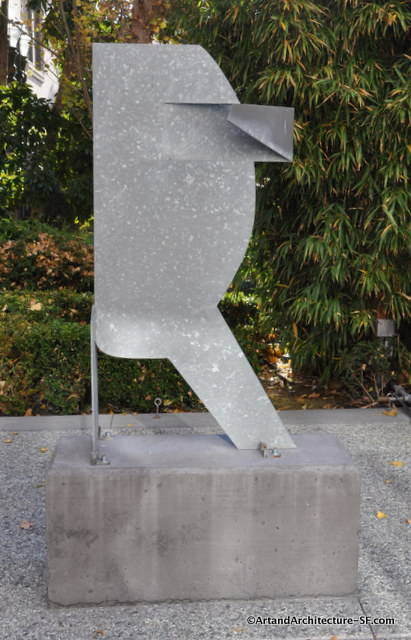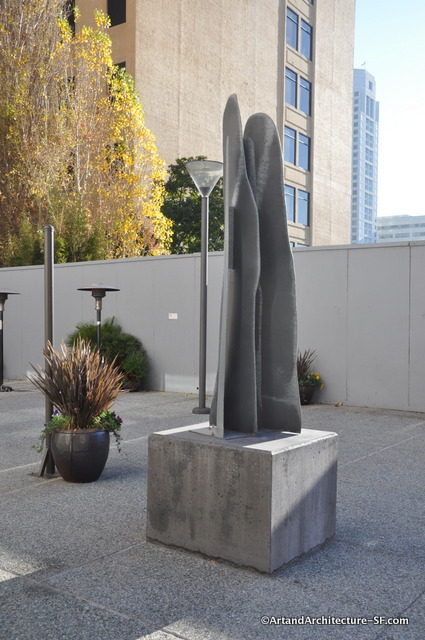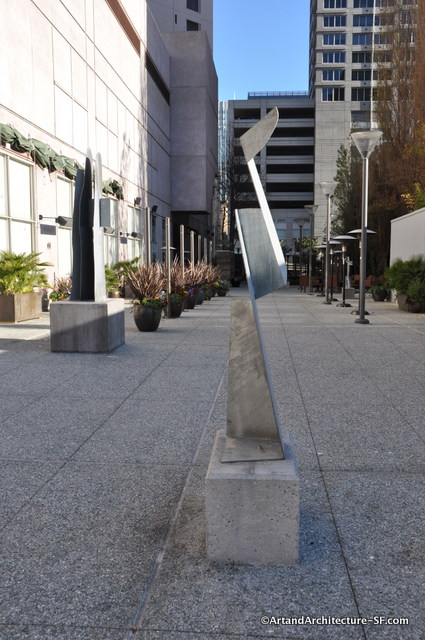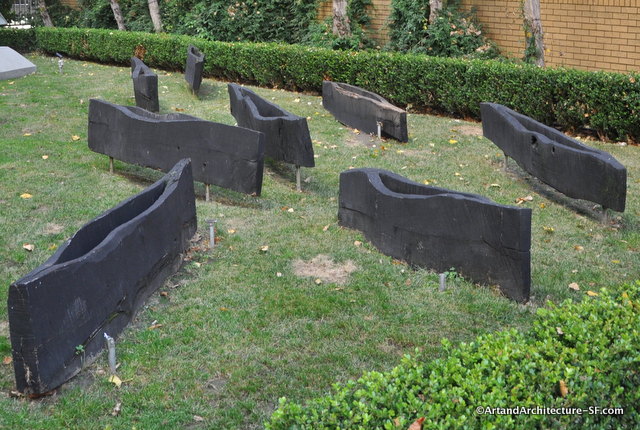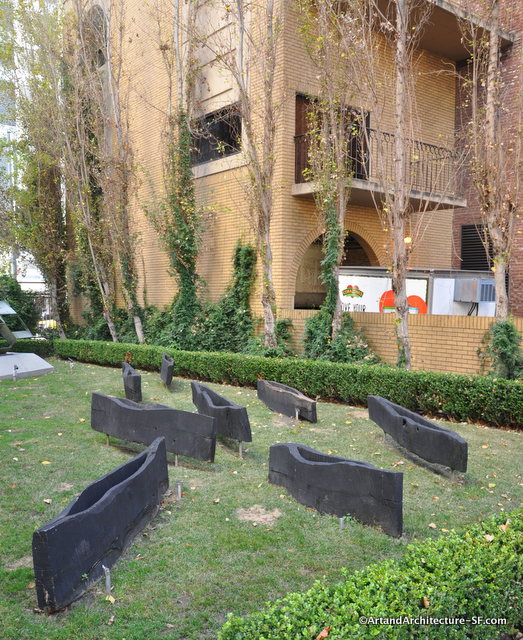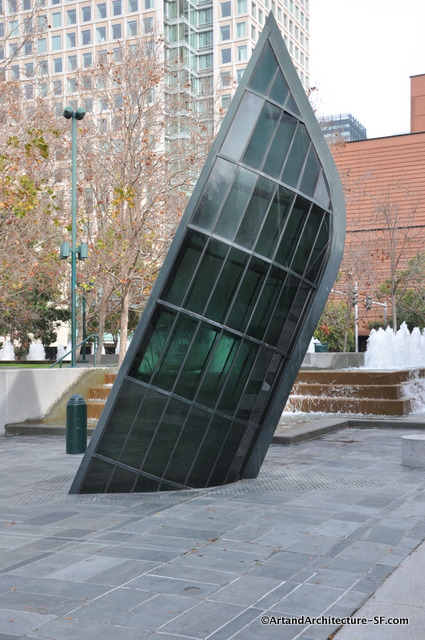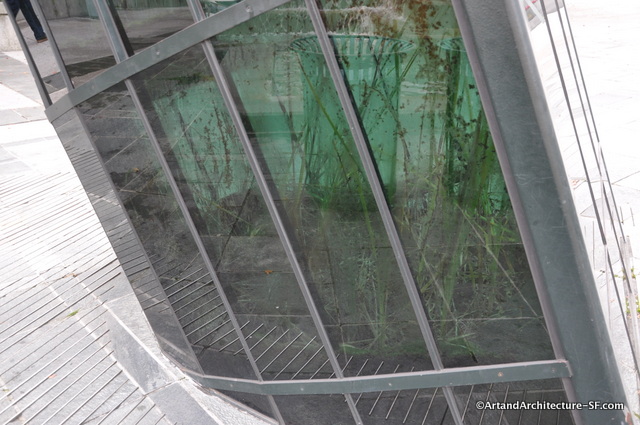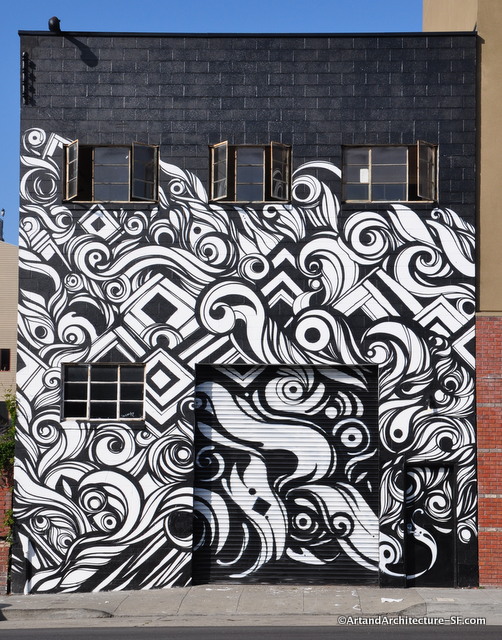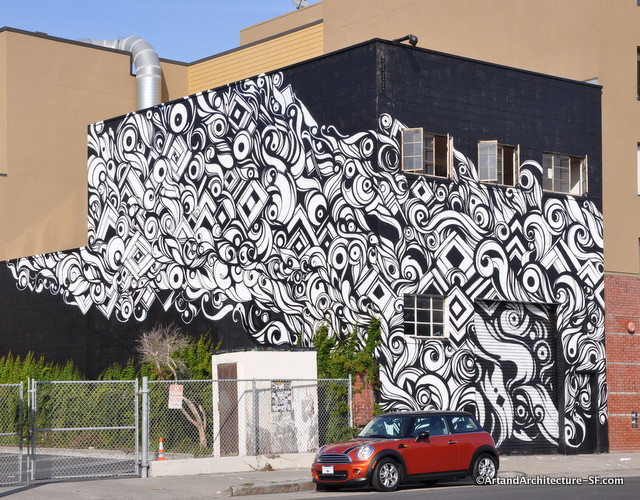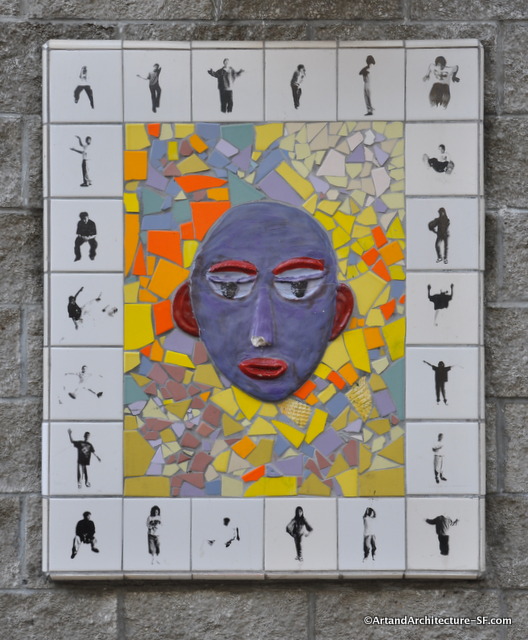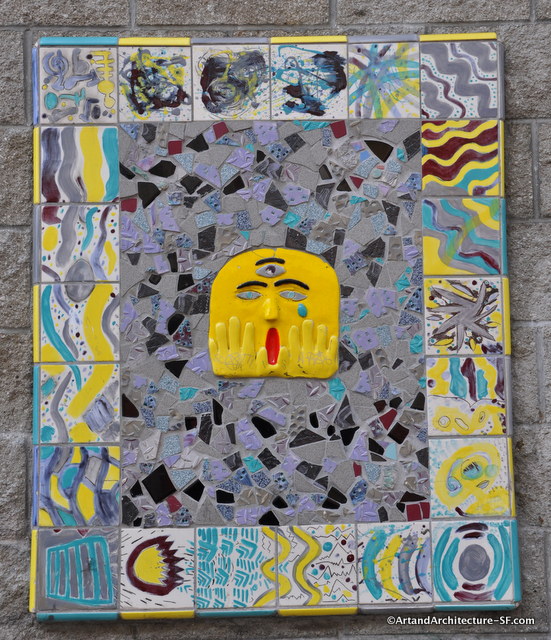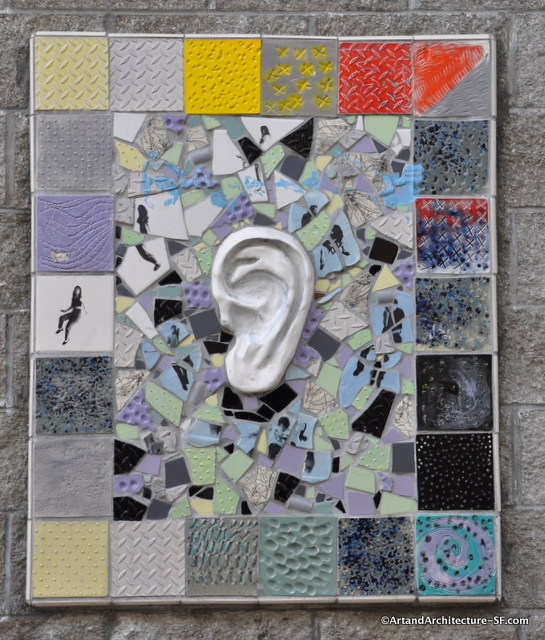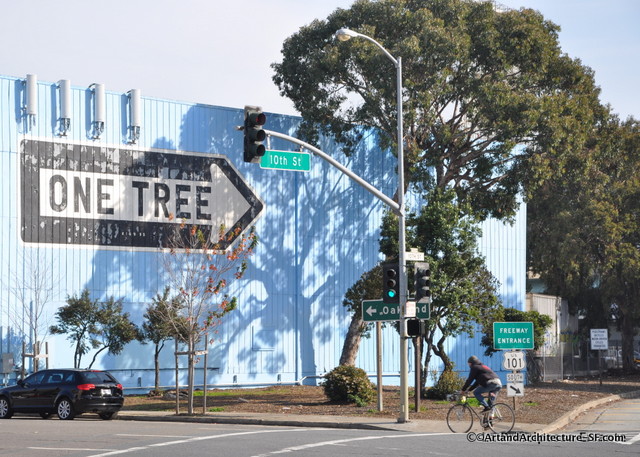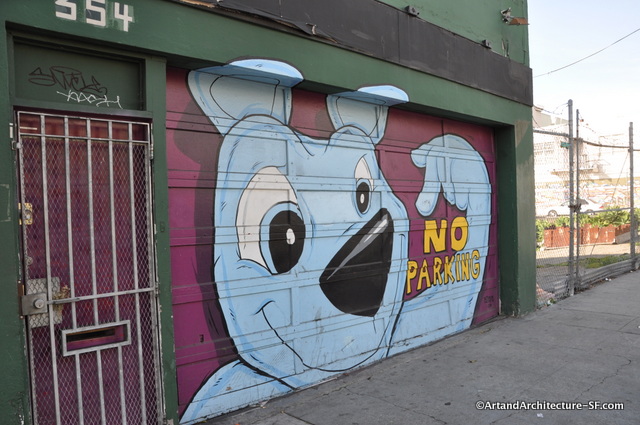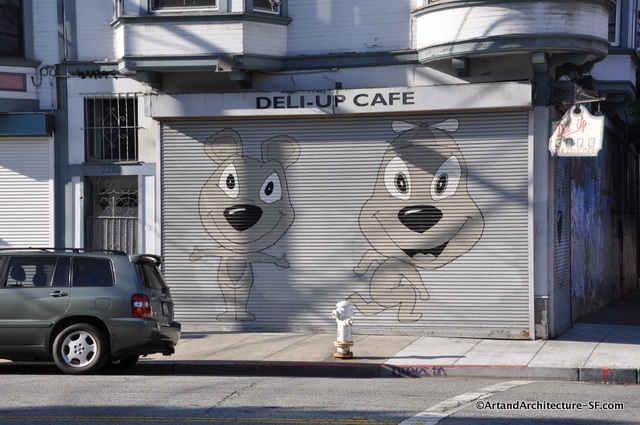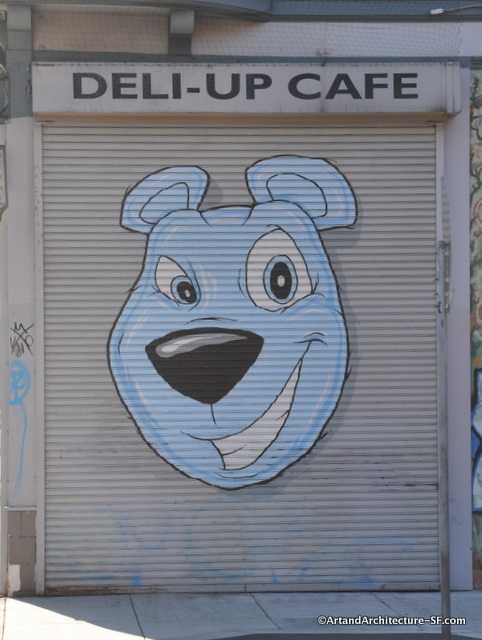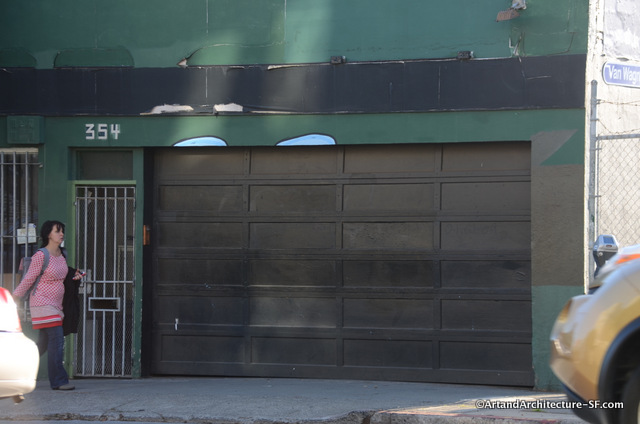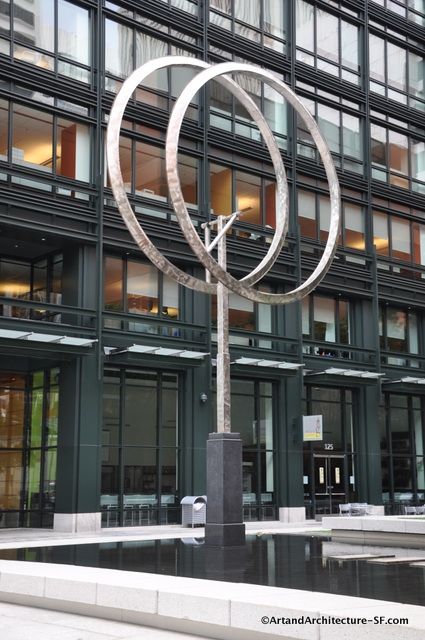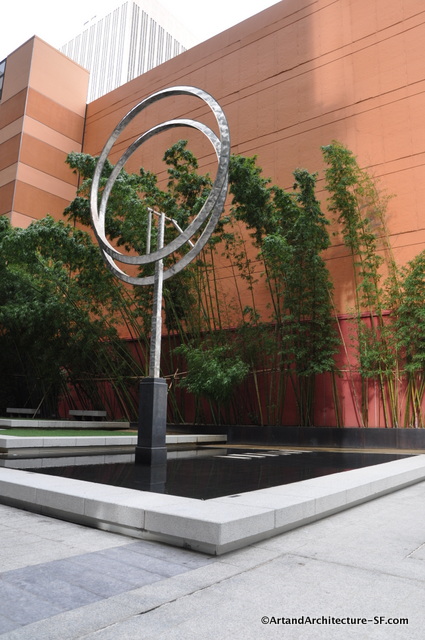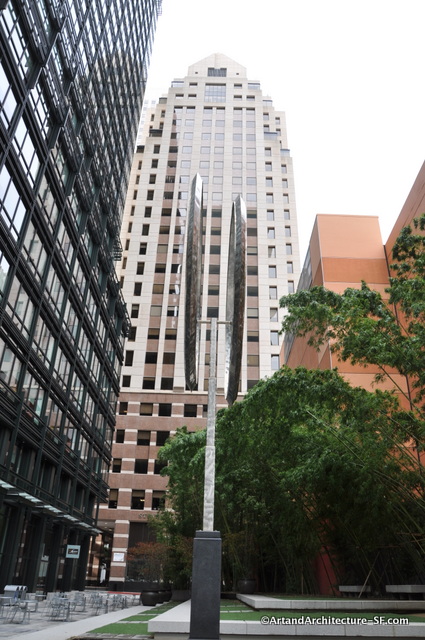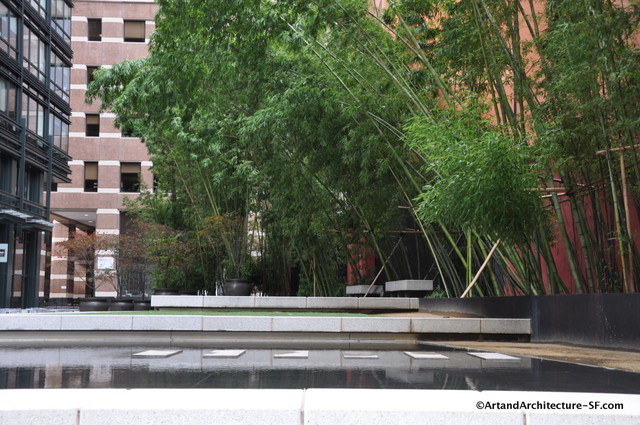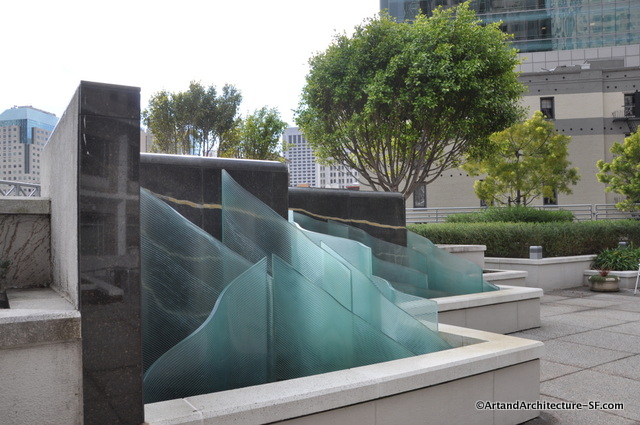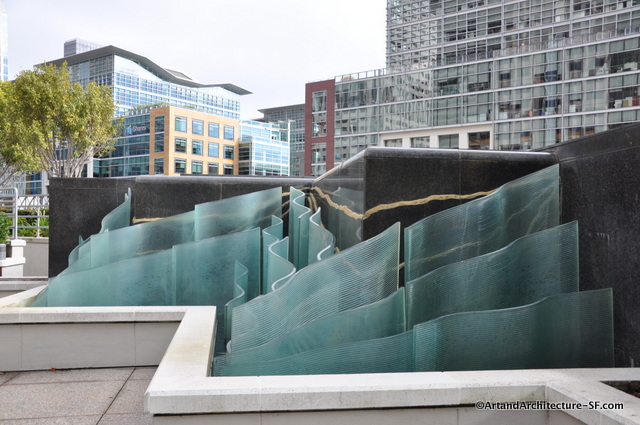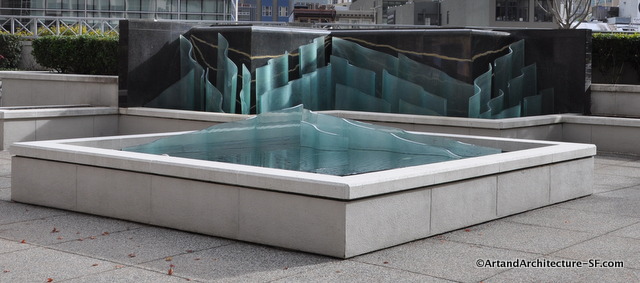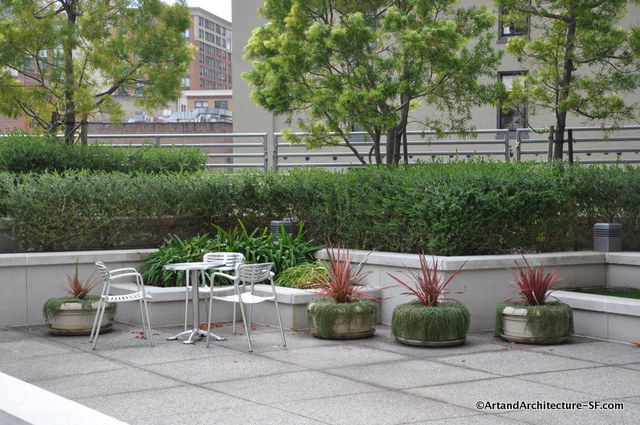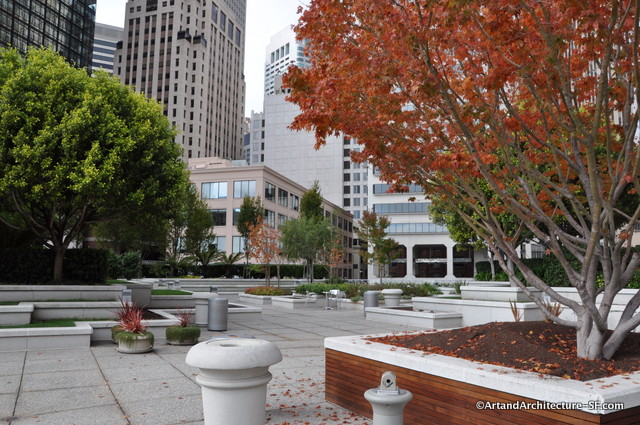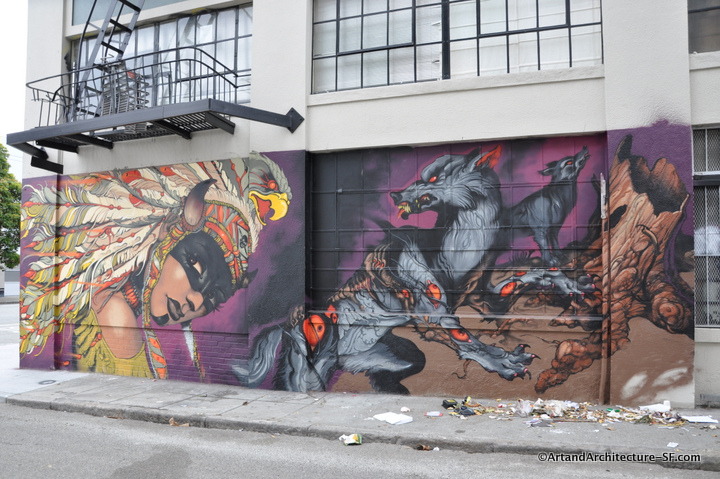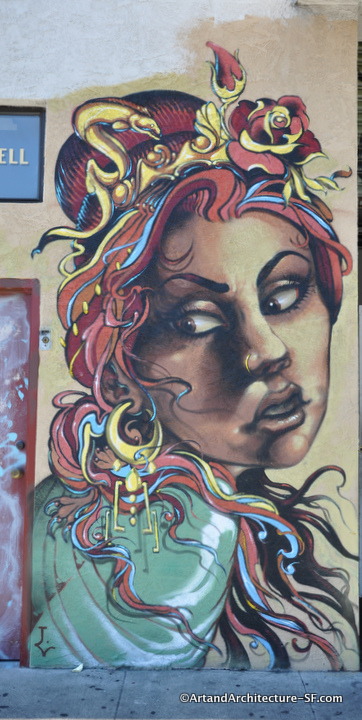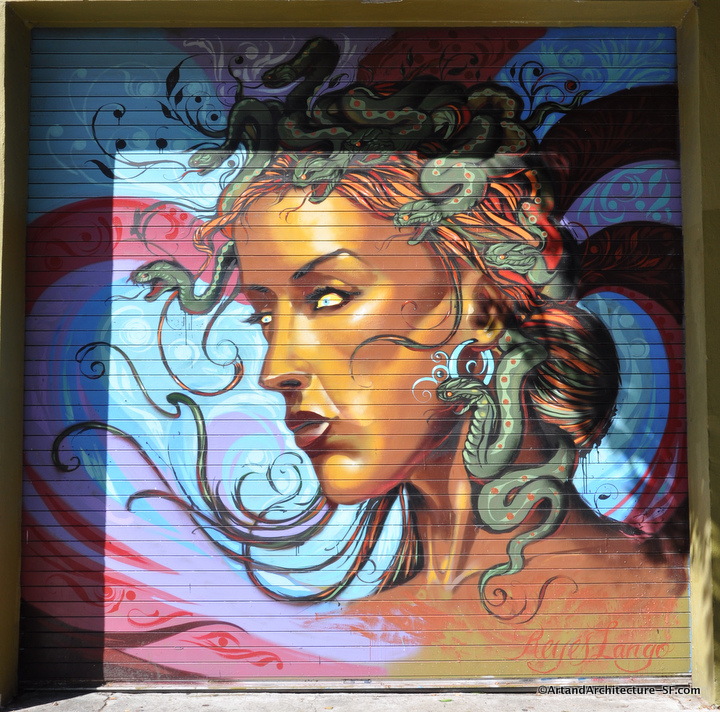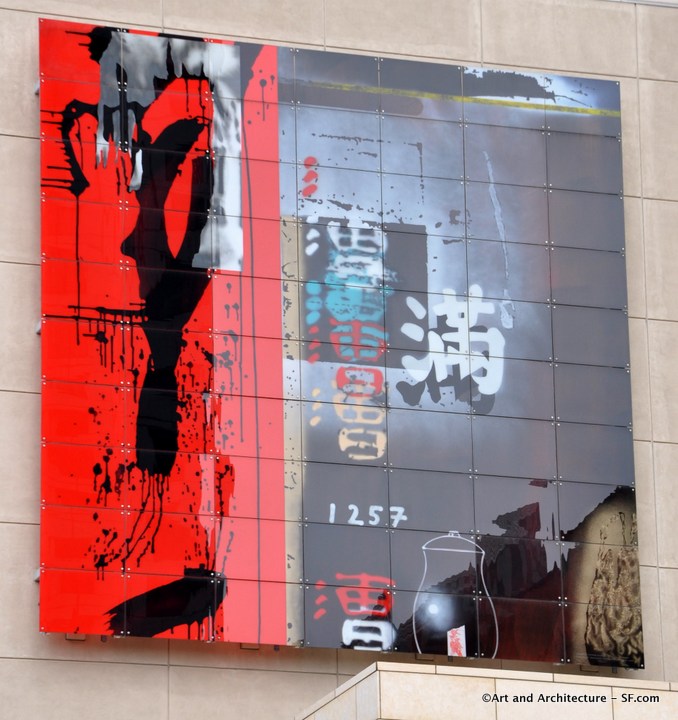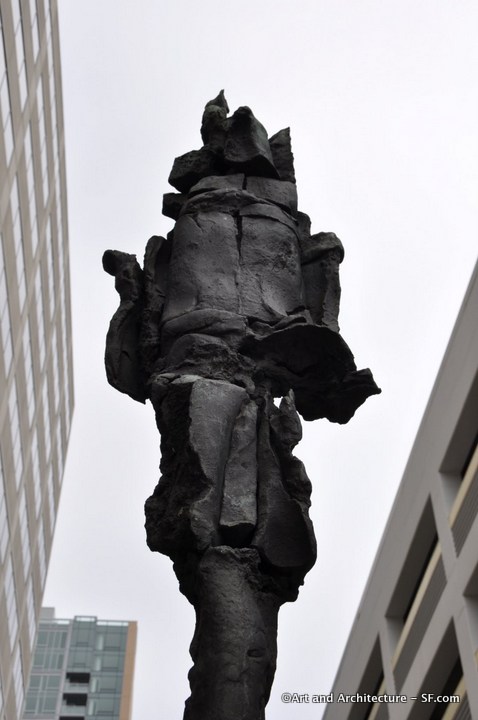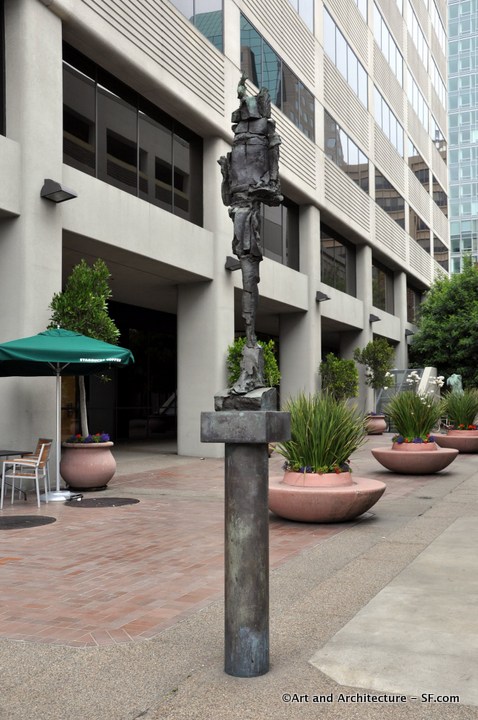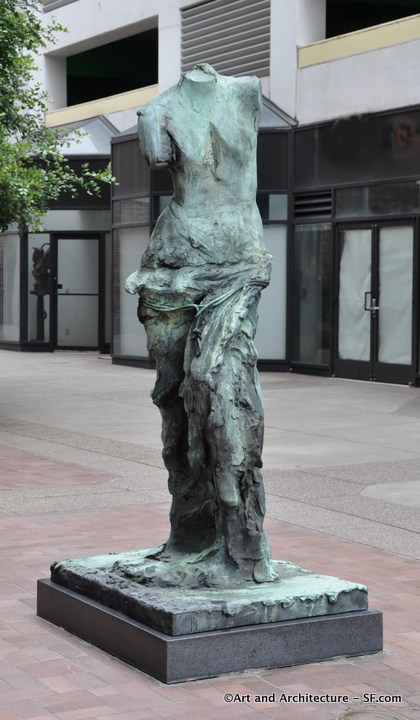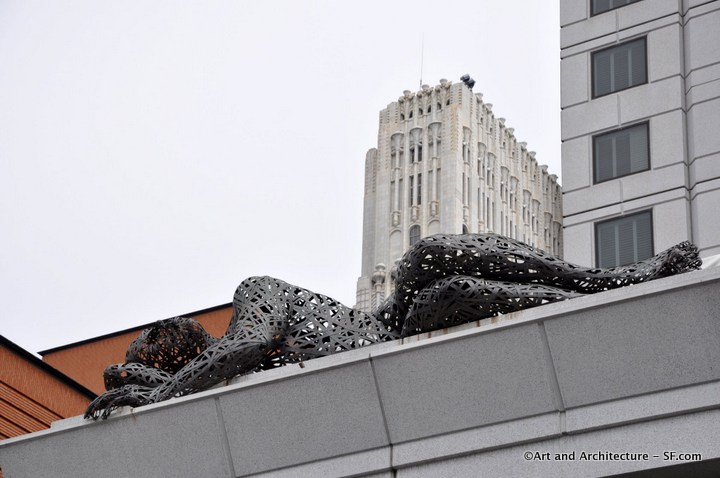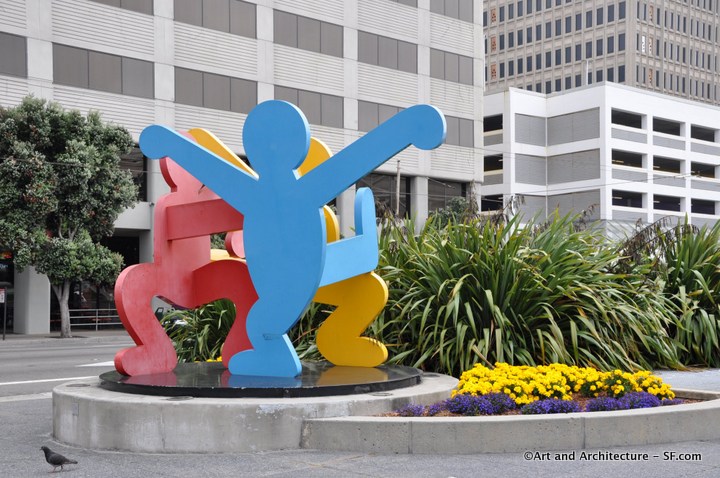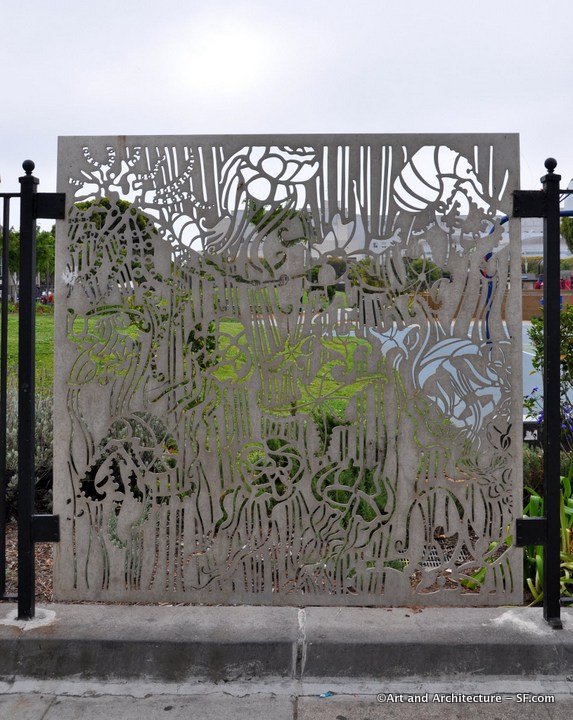In 2003 Kenneth Baker of the San Francisco Chronicle wrote:
“Deacon’s “Not Out Of The Woods Yet” (2003) nests muscularly in a tight spot behind columns at the entrance to 500 Howard St., on the intersection’s northwest corner.
The Bay Area has so far seen Deacon’s work in depth only once, in the San Francisco Museum of Modern Art’s 1987 show “A Quiet Revolution: British Sculpture Since 1965.”
Much of his sculpture turns on matters such as when an enclosure must count as an object or as architecture. He makes viewers sense connections between physical feelings and inner dispositions to use certain words in describing them.
“Not Out Of The Woods Yet,” fabricated on commission, strikes the hurried glance as a network of stocky aluminum struts. But try to describe it in detail and it becomes a puzzle frustrating to eye and mind alike.
Six identical elements make up the work, all composed of fat, gleaming hexagonal metal beams. Their surfaces wink with an embossed tread-plate pattern.
The silvery aluminum draws light into the canopied space, which lies in shadow at least half the day.
The sculpture’s three bottom elements–one upright, two upended–notch together as if leaning to accommodate one another.
Three more, inverted, sit above, making the upper half a mirror image of the lower.
Where each bottom element rests on the ground, its footprint is an irregular nine-sided polygon, for which we have no ready name.
End-on, one of these structures at ground level resembles a simplified steam locomotive cowcatcher.
The top perimeter of each one plots the same eccentric figure, in the same orientation, enclosing a smaller or larger area. Thick, sloping struts connect top and bottom perimeters.
No strut springs from a corner, apparently upsetting an expectation one did not know one had, making the whole structure strangely hard to comprehend.
These simple facts prove startlingly difficult to sort out, though only their own complexity conceals them.
Deacon’s piece passes a crucial test of public sculpture: One leaves it curious to know how hard it will be to hold in memory and how easy to grasp when next seen”
Richard Deacon was born in Bangor, Wales and educated at Plymouth College. He then studied at the Somerset College of Art in Taunton, St Martin’s School of Art in London and the Royal College of Art, also in London. He left the Royal College in 1977, and went on to study part time at the Chelsea School of Art. His work is breathtaking and broad, visit his website, while a tad difficult to maneuver through it will give you a bigger picture of his work.
